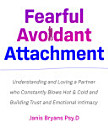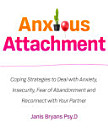Dismissive Avoidant Attachment: Understanding and Loving an Emotionally Distant Partner, Meeting your Needs and Nurturing Closeness
এই ই-বুকের বিষয়ে
Do you feel coldness and distance within your relationship that is difficult to explain?
Are you worried about drifting apart?
Attachment styles are the way in which we connect with other people. They are generally developed by infants and further refined by children, adolescents and adults.
Many of the fears, beliefs and behavioural patterns you emulate as an adult are derived from how you felt in the first few years of life.
Often, the dismissive avoidant sees themselves as some sort of lone wolf. They feel that they don’t need anyone and that nobody needs them. They can drift in and out of everyone’s lives without causing any sort of emotional havoc and they like that lack of accountability or obligation.
They may also shy away when you open up to them. Feeling close can feel like a danger zone and so they avoid it.
They value independence and ultimately fear that they will be enmeshed; the idea that a relationship will swallow them up.
The only thing they tend to like less than others being vulnerable is being vulnerable themselves. It can make them feel exposed, which leads to a vicious cycle of sabotaging relationships.
Understanding dismissive avoidant attachment can help you to understand why you react the way you do in relationships. If you believe that a loved one has this style of attachment, understanding where the instincts come from may also help you to respond to them.
People with dismissive avoidant attachment may show signs of:
- Avoidance of eye contact.
- Avoidance of physical touch.
- Rarely, or even never, asking for help.
- Eating in abnormal or disordered ways.
As children with avoidant attachment grow up, they may show signs in later relationships and behaviours, including:
- The possession of an apparently high self-esteem and low assessment of others in relationships.
- Trouble showing or feeling their emotions.
- A sense of personal independence and freedom being more important than a partnership.
- Not relying on their partner during times of stress and not letting their partner rely on them.
- Seeming calm and cool in situations that generate typically high-emotions.
- Discomfort with physical closeness and touch.
- Using sarcastic tones.
- Accusing their partner of being too clingy or overly attached.
- Refusing help or emotional support from others.
- Fear that closeness to a partner will cause them to get hurt.
People who suffer from dismissive avoidance, during their mental growth, have come to generate this type of internal dialogue: "I'm good, but others are not really important to me. I'm fine as I am and I don't need anyone."
Any person who is close to a dismissive avoidant may feel:
- Ignored, devalued and unwanted.
- Empty and confused when close to their partner.
- That there is something wrong and somehow, it's their fault.
- As if they are playing a constant game of ‘hide and seek’ in the relationship.
- That sometimes, they are insecure and unworthy of love.
- That they feel lonely and very sad.
Such feelings, if experienced too often or too intensely, may ultimately make a relationship non-sustainable.
The good news is that you can change the attachment style. It may take time, work and a great deal of understanding from people in life. However, it is possible to build intimate, secure relationships that fulfil and help you to feel safe.
If you do not intervene immediately, those who have a relationship with a dismissive avoidant person will end up having to settle for a relationship made up of distances, misunderstandings and conflicts until the relationship is totally broken. Everything that has been built together will be lost forever.
Understanding and managing the wounds of attachment is the best gift that you can give to your relationship.






